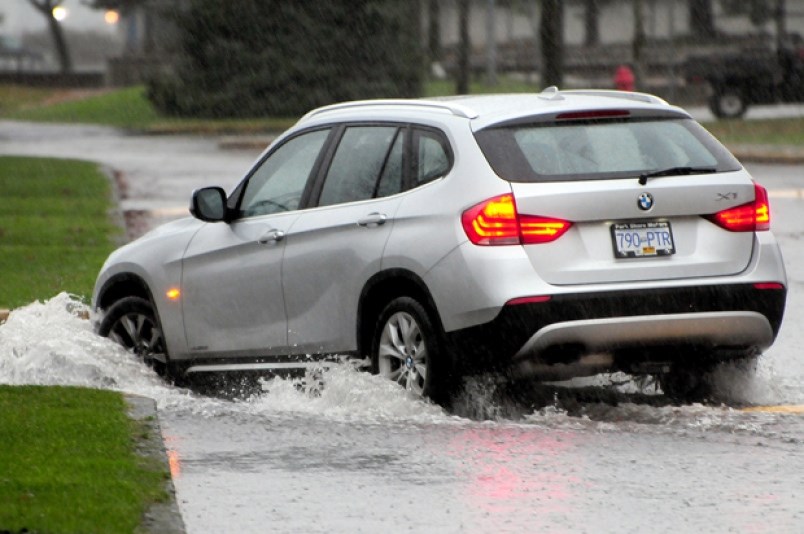Fresh rain after a long dry spell can lead to treacherous driving conditions, but there’s no reason the situation should go spinning out of control.
Here are some tips from ICBC for safe driving in the rain and other adverse conditions:
■ Posted speed limits are designed for ideal road conditions. Slow down when driving on snow, ice, slush or rain.
■ Allow yourself at least twice the normal braking distance on wet or slippery roads.
■ Avoid driving through flooded or washed out roads.
■ Check tire pressure regularly. Pressure drops in colder conditions.
■ Keep the wiper fluid topped up for clearer visibility. Replace windshield wipers at the first sign that they are not doing the job of clearing the glass properly.
Here are answers to some common questions about driving in poor weather conditions:
Q: Is cruise control OK in the rain?
A: Don’t use cruise control in wet or slippery conditions. An activated cruise control system will continue to apply power, keeping your wheels spinning. Snow, ice, slush and rain can cause wheel-spin and loss of control.
The only way to stop it is to reduce power. By the time you turn off your cruise control, it may be too late for you to get control of your steering again.
Q: How can I prevent hydroplaning?
A: Hydroplaning takes place when the tires lose contact with the road surface and float on a film of water, and you lose control of steering and braking. It can happen in rain or standing water. The higher your speed, the greater your chances of hydroplaning.
Prevent hydroplaning by scanning ahead for large puddles and reducing your speed, especially during heavy rain. If hydroplaning happens, don’t brake – decelerate and drive straight.
Q: Will my anti-lock brakes help me stop?
A: While an anti-lock braking system doesn’t allow you to drive faster or to stop sooner, it can help prevent wheels from locking up on wet and slippery surfaces. ABS also helps you maintain steering and avoid skidding while braking.
In order for ABS to function properly, apply firm, hard, continuous pressure to the brake pedal until the vehicle stops. Don’t pump the brakes as this action turns the system on and off. It’s normal to experience brake noise or shudder when ABS is in use.
Q: What about electronic stability control?
A: ESC helps you keep control of your vehicle especially on slippery roads or in emergency situations, such as swerving to avoid an obstacle. But remember that ESC can’t override a vehicle’s physical limits. If a driver pushes the possibilities of the vehicle’s handling too far, ESC can’t prevent a crash. Like ABS, it’s a tool to help you maintain control.



